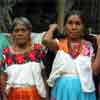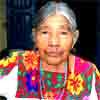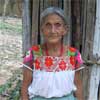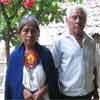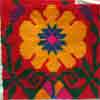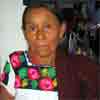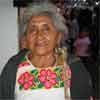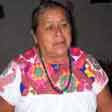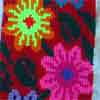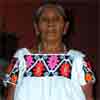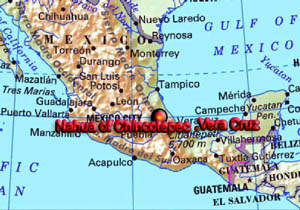 |
||||||
| Nahua of Chincotepec CDI en Espanol | ||||||
| Enciclopedia de los Municipios de México | ||||||
| Info del disticto de Benito Juarez.pdf | ||||||
| Info del districto de Chicontepec.pdf | ||||||
| Info del Districto de Ilmatlan.pdf | ||||||
The Teneek, or Huastec, people originally occupied La Huasteca. By the 13th Century AD (or earlier), Náhuatl speaking peoples began moving into the region from Central Mexico (some brought as slaves by the Totonac), and the Teneek withdrew to lands further north. In the 1400's the Aztecs began a campaign of conquest in the area, only to be followed by the Spanish in the 1500's. Chicontepec was established as a Spanish "encomienda" in 1526, but around 91% of the indigenous population of Veracruz died after the Conquest. The survivors were rounded up in the "reducciones" that began in 1592 and forced to settle in central locations, giving rise to the "strange interminglings" of ethnic groups found in the Sierra Madre today.
Most Nahua families are horticulturalists who grow subsistence crops - maize, beans, squash, chiles, and cilantro - in small plots near their homes. Some farmers cultivate coffee, sugar cane, tobacco, yuca, sweet potatoes, and citrus; local climate is determined by elevation (ranging from 150 to 600 meters in the Sierra Chicontepec), which determines what plants can be grown. Each kind of domestic plant possesses a seed spirit (Xinaxtli), and paper cuttings (Tlatektli) that represent the spirits are used in agricultural rituals. Paper is still made using traditional methods in the Sierra Chicontepec. Nahua families raise various domestic animals (pigs, burros, horses) and birds (ducks, turkeys, chickens); cattle are especially prized. People fish and trap crayfish in the many rivers and streams, and collect useful wild plants in the rich forests. To earn money, many men and boys leave the Sierra to work on the large cattle ranches and sugar cane and citrus plantations in the coastal lowlands nearby. This is also an area from which the Mexican Army has gotten many recruits.
Many local religious ceremonies and practices seem to date back to Aztec times, although most people also identify themselves as Catholics. Natural places like caves, springs, hills, swamps, and mountains are revered as places where spirits reside. Evangelical Protestant groups arrived in the Sierra Chicontepec in the 1970's, and many Nahuas have converted to "new" religions resulting in the type of religious strife seen in other indigenous regions of Mexico, like Chiapas.
Many Nahua men and women in the Sierra Chicontepec still wear traditional attire as shown in the photos in the village galleries.
The female costume consists of a short-sleeved white blouse, which is decorated on the sleeves and the yoke with fine cross-stitch embroidery (generally in the cooler regions) or delicate crochet (in areas below 500 meters elevation). Women wear their blouses tucked into the fronts of their skirts, but hanging free to the sides and back. In Ilamatlán and Zontecomatlán women wear a different style of blouse, decorated with chenille-like embroidery, which has puffy short sleeves. Skirts (enaguas) worn on a daily basis are made from plain, but colorful, fabrics. Aprons are often worn with these skirts. On special occasions, women may wear a white enagua known as "tlachihualcueyitl," that is heavily embroidered on the bottom third of the skirt. A narrow, red "quexquemitl" is worn across the chest over one shoulder and under the opposite arm. Completing the costume is a rebozo, called "mamale," traditionally of a dark colored fabric.
Although many boys and men wear western style clothing, older men still dress in the traditional long-sleeved shirt and loose, ankle-length pants made from white "manta" fabric. Huarache sandals, a palm hat, sisal shoulder bag, and ever-present machete complete the Chicontepec male costume.
Narrative written for Mexican textiles project by Karen Ewell
Thanks Karen
Bob Freund
1/06
|
Home - The Collection - Indigenous women- Bob's Top 10 - Textile Patterns - Documented Villages - Participate The Store Other traditions Video Page Email me at: mexican@mexicantextiles.com
© 2006 Bob Freund All Rights Reserved |
